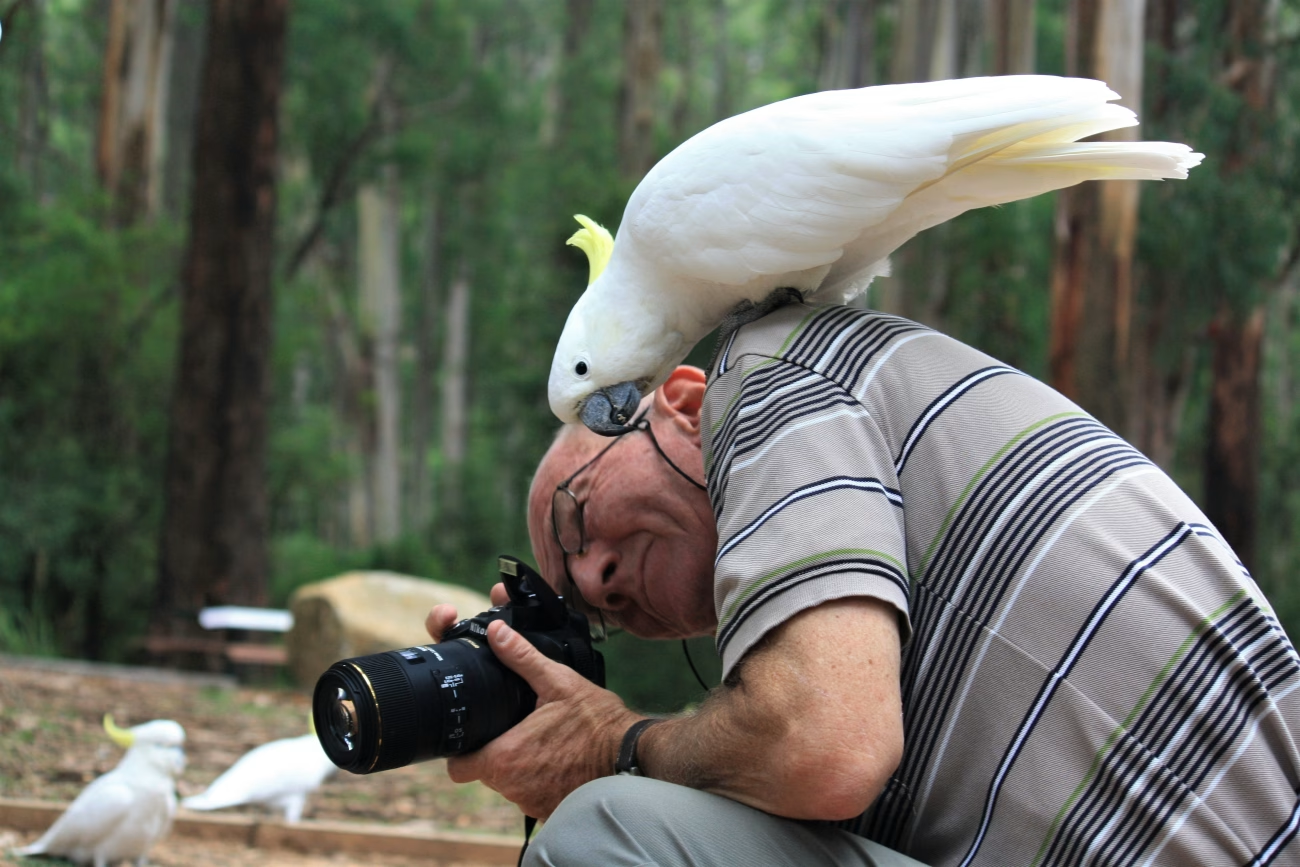They once soared through dense rainforests, calling out to their flocks with unmatched brilliance. Today, many of those same species perch gently on our fingers, mimic our laughter, and eat breakfast beside us. The journey from wild canopy dweller to beloved household companion is a window into human history, culture, and the deep bond between species.
Welcome to the remarkable story of the parrot’s evolution.
Born in the Canopy: The Wild Origins of Parrots
Long before they mimicked human speech, parrots were thriving in some of the world’s most complex ecosystems. Native to South America, Central America, Australasia, and parts of Africa, wild parrots evolved to survive in challenging conditions.
They developed strong social bonds, long lifespans, and problem-solving intelligence, all traits that would one day help them adapt to life with humans. Macaws, cockatoos, African greys, conures. Each species carved its place in the natural world, often living in tightly knit flocks and nesting in hollow trees. But what made them so fascinating to early humans?
Sacred Symbols and Royal Companions
The earliest evidence of humans keeping parrots as companions dates back thousands of years. In ancient Mesoamerican cultures, such as the Maya and Aztecs, parrots were more than pets, they were symbols of the divine. Their vibrant feathers adorned ceremonial robes, and their presence in royal courts was a status symbol.
Even across the ocean, in India and China, parrots held a special place in noble households. They were prized not just for their beauty but also for their ability to speak, a trait that astonished early humans and helped blur the line between animal and companion.
In medieval Europe, parrots became fashionable among royalty and explorers. Sailors often brought them back from the tropics as exotic gifts, and their presence in portraits of queens and noblewomen spoke volumes about status, wealth, and global reach.
From Novelty to Family: The Rise of the Modern Pet Parrot
It wasn’t until the 20th century that parrots truly began transitioning from exotic novelties to familiar pets in Western households.
As global trade expanded and aviaries grew, more people gained access to parrot species, especially smaller ones like budgerigars (budgies) and cockatiels. These birds, with their friendly nature and relatively manageable care needs, found homes in suburban living rooms and city apartments alike.
The shift wasn’t just physical. Parrots began to be seen less as decoration and more as companions, intelligent, emotionally complex beings capable of bonding deeply with their humans. Their ability to mimic speech wasn’t just entertainment; it was a bridge to interspecies communication, however limited.
The Intelligence That Changed Everything
One of the turning points in the public’s understanding of parrots came through science, particularly the work of Dr. Irene Pepperberg and her African grey parrot, Alex. Over years of research, Alex demonstrated not just mimicry, but comprehension. He could count, identify colors and shapes, and even express preferences like “I want banana” or “Wanna go back.”
This groundbreaking research challenged traditional views of animal intelligence and raised ethical questions about keeping such sentient creatures in cages. And that meant pet ownership came with serious responsibility.
From Cage to Enrichment: A Shift in How We Care
Modern parrot owners are rethinking what it means to share life with a wild-at-heart bird. Gone are the days when a seed diet and tiny cage were considered enough. Today, we understand that parrots need:
- Mental stimulation through puzzles, toys, and interaction
- Physical activity via out-of-cage time and climbing
- Emotional connection, including social bonding (with humans or other birds)
- A diet closer to what their wild cousins eat: fresh fruits, vegetables, and foraging opportunities
Some even go a step further, creating “parrot rooms” filled with swings, branches, and foraging stations to mimic the wild environment their birds instinctively crave. And with the rise of social media, more parrot owners are sharing both the joys and the challenges of parrot parenthood, helping to educate others and set more realistic expectations.
Challenges of Captivity: The Other Side of the Story
For all the love and attention they receive, parrots remain wild animals at heart. They form strong bonds and may suffer from anxiety or depression if neglected. They can scream, bite, pluck their feathers, or act out if their needs aren’t met. Many species also live 30 to 80 years (outliving their owners in some cases) which can lead to parrots being rehomed multiple times throughout their lives.
Unfortunately, the exotic pet trade has also harmed wild populations. Illegal capture and habitat destruction have pushed several parrot species toward extinction. Responsible breeders and conservationists now work to promote ethical practices and protect wild flocks.
If you’re thinking of adopting a parrot, it’s crucial to understand both the magic and the responsibility.
A Relationship Still Evolving
The story of parrots and people is still being written every day, in every home where a parrot whistles the morning tune, repeats a toddler’s giggle, or gently leans into a human shoulder. And we’re still learning what it means to care for a creature that remembers the jungle in its bones, even while napping on a velvet cushion. Parrots may have left the rainforest, but the rainforest hasn’t left them.
As we welcome these incredible beings into our homes, the least we can do is honor the wild spirit they still carry, by offering affection, respect, understanding, and a life worthy of their brilliance.
Related post :



3 thoughts on “From Jungle to Living Room: The Evolution of Pet Parrots”